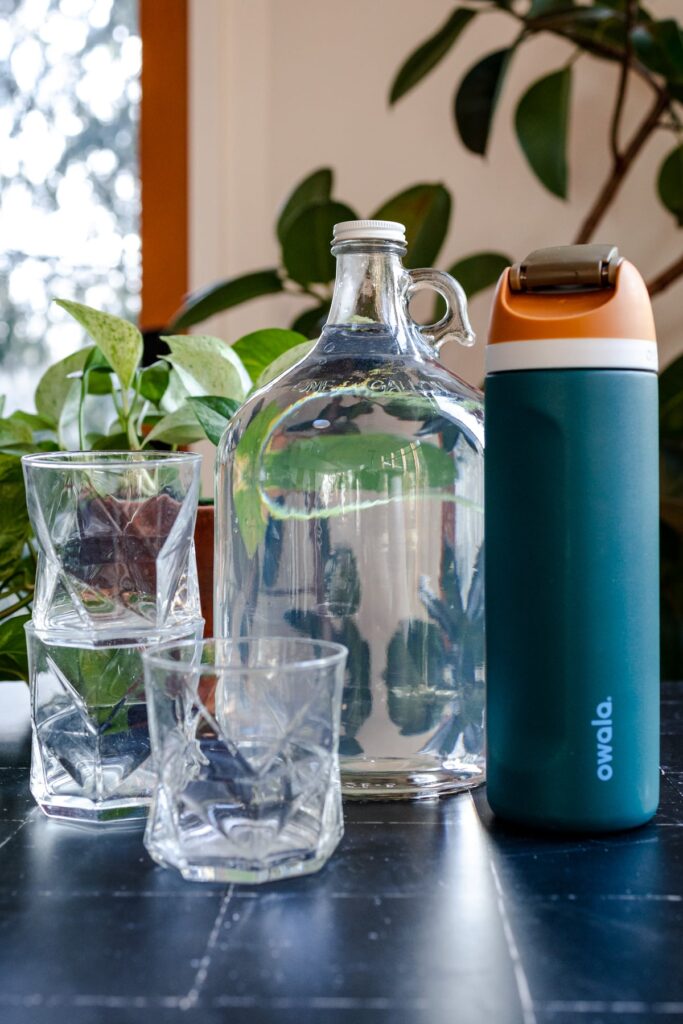Unveiling the Mysteries of Measurement: Understanding Ounces and Gallons
Throughout our lives, we encounter measurements in countless situations – cooking a delicious meal, refilling the car’s gas tank, or measuring ingredients for a science experiment. Understanding units of measurement is crucial for navigating these everyday tasks. This article delves into the world of ounces and gallons, exploring their history, conversion factors, and practical applications to empower you in the kitchen, at home improvement projects, or anywhere measurement plays a role.
A Historical Journey: The Evolution of Ounces and Gallons
The units of measurement we use today have fascinating origins. Let’s embark on a brief historical journey to understand how ounces and gallons came to be:
- Ounces: The term “ounce” can be traced back to ancient Rome, where the “uncia” was a twelfth part of the “libra” (pound). This concept of dividing a unit into smaller parts laid the foundation for our modern ounce.
- Gallons: The origin of the gallon is less clear, with theories suggesting it may have stemmed from the Latin “galleona” (large jar) or the Old French “galon” (container). Regardless of its precise origin, the gallon has endured as a unit for measuring liquids.
Over the centuries, the definitions of ounces and gallons have been refined and standardized. Today, we primarily use two measurement systems:
- US Customary System: This system, prevalent in the United States, uses the fluid ounce (fl oz) and the gallon (gal).
- Imperial System: Used in some countries like Canada and the United Kingdom, the imperial system employs the imperial fluid ounce (fl oz) and the imperial gallon (imp gal). It’s important to distinguish between these two systems to ensure accurate measurements.
Conversion Factors: Unveiling the Equivalencies
The key to using ounces and gallons effectively lies in understanding their conversion factors. Here’s a breakdown:
-
US Customary System:
- 1 gallon (gal) = 128 fluid ounces (fl oz)
- 1 fluid ounce (fl oz) = 8 tablespoons (tbsp)
- 1 tablespoon (tbsp) = 3 teaspoons (tsp)
-
Imperial System:
- 1 imperial gallon (imp gal) = 160 imperial fluid ounces (fl oz)
- 1 imperial fluid ounce (fl oz) = 28.41 milliliters (ml) (Note: This conversion factor uses the metric system for reference)
Remember: When using recipes or instructions, it’s crucial to identify whether they use the US customary system or the imperial system to ensure you’re using the correct measurements.
Practical Applications: Ounces and Gallons in Everyday Life
Understanding ounces and gallons is beneficial in various aspects of our daily lives. Here are some examples:
- Cooking and Baking: Recipes often specify ingredients in ounces or cups (which can be further converted to ounces). Accurate measurements ensure your dishes turn out perfectly.
- Mixing Beverages: Recipes for cocktails, juices, or sports drinks might call for specific quantities in ounces. Measuring these precisely guarantees the desired taste and consistency.
- Car Maintenance: Checking your car’s oil level or topping up fluids like coolant often involves using ounces or quarts (which can be further converted to ounces).
- Home Improvement Projects: Purchasing paint, stain, or other liquid materials for home renovations might require using gallons or quarts (convertible to ounces) to determine the amount needed.
These are just a few examples, and the applications of ounces and gallons extend far beyond this list. With a basic understanding of these units, you’ll be well-equipped to tackle various measurement tasks with confidence.
Beyond the Basics: Additional Units and Conversions
The world of measurement encompasses a vast array of units beyond ounces and gallons. Here’s a glimpse into some additional units you might encounter:
- Milliliters (ml): This metric unit is commonly used for measuring smaller volumes of liquids, particularly in scientific settings or recipe instructions outside the US.
- Liters (L): Another metric unit, liters are used for larger volumes of liquids.
- Quarts (qt): A unit of volume within the US customary system, quarts are equal to 32 fluid ounces.
Understanding how these units interconvert empowers you to navigate a wider range of measurement scenarios. Many online conversion calculators can simplify the process for you.
A Recipe for Success: Practical Tips for Using Ounces and Gallons
Here are some helpful tips to ensure accurate and hassle-free measurement using ounces and gallons:
- Invest in Measuring Cups: A set of measuring cups with clear markings for ounces, cups (convertible to ounces)
FAQ: Unveiling the Mysteries of Ounces and Gallons
This section tackles common questions that may arise regarding ounces and gallons:
- Q: How many ounces are in a gallon?
A: In the US customary system, there are 128 fluid ounces (fl oz) in one gallon (gal).
- Q: What’s the difference between a fluid ounce and a regular ounce?
A: The term “ounce” can refer to two different units: fluid ounces (fl oz) for measuring liquids and ounces (oz) for measuring weight. It’s crucial to distinguish between these based on the context.
- Q: I’m following a recipe from another country. It uses liters (L) for liquids. How can I convert this to ounces?
A: You can use online conversion calculators or a conversion chart to find the equivalent measurement in ounces. There are roughly 33.81 fluid ounces (fl oz) in one liter (L).
- Q: My measuring cup only has markings for cups. How many ounces are in a cup?
A: There are 8 fluid ounces (fl oz) in one cup (c) within the US customary system.
- Q: When buying paint for a project, the label shows the quantity in gallons (gal). How many square feet can I typically cover with that amount?
A: The coverage area you can paint with a gallon depends on several factors like the type of paint, surface texture, and desired number of coats. Refer to the paint manufacturer’s recommendations for specific coverage estimates.
By understanding these conversion factors and practical tips, you’ll be a measurement master in no time! Remember, the key lies in using the correct units for the task at hand and double-checking your measurements for accuracy. With a little practice, you’ll be confidently navigating recipes, tackling home improvement projects, and ensuring precise measurements in all aspects of your life.



